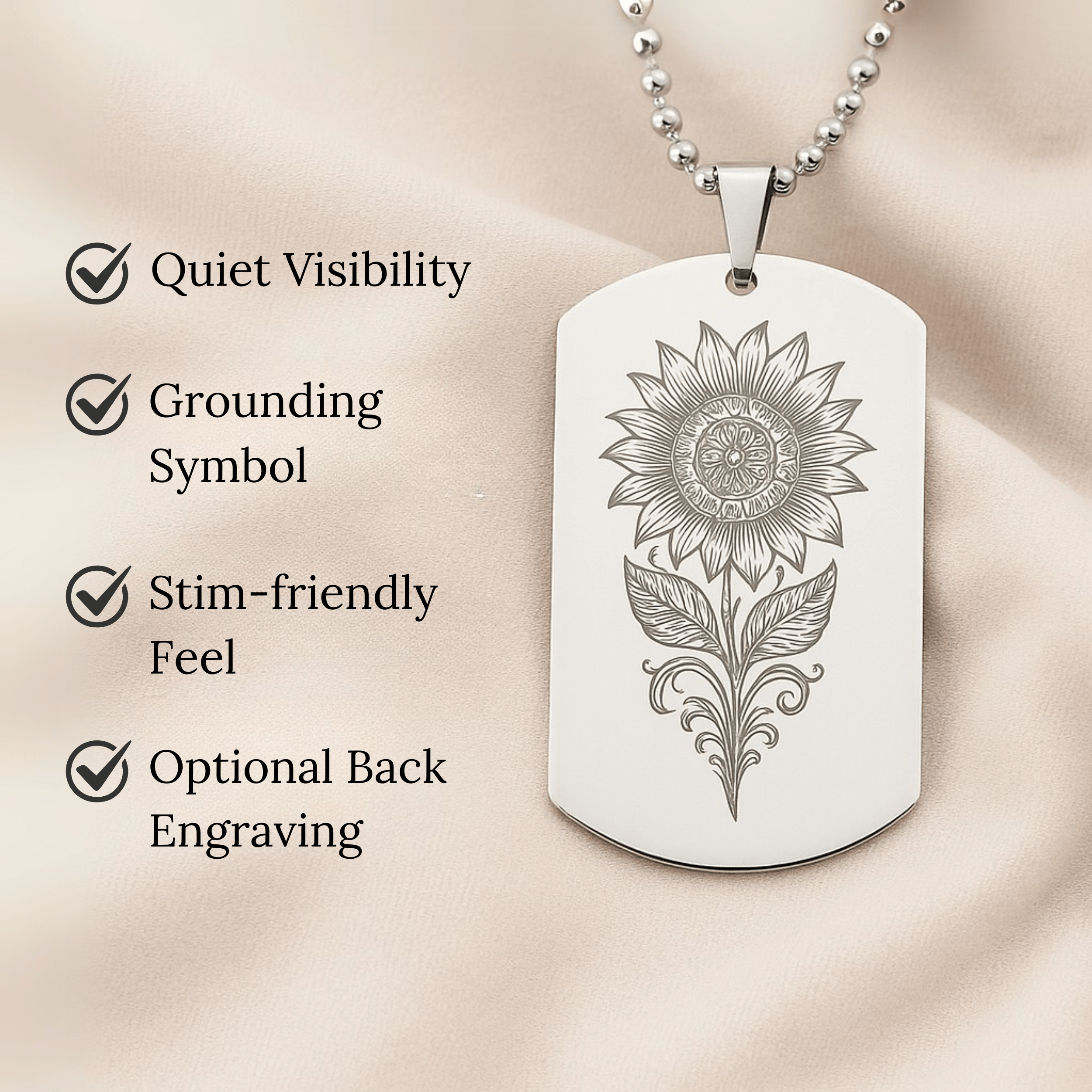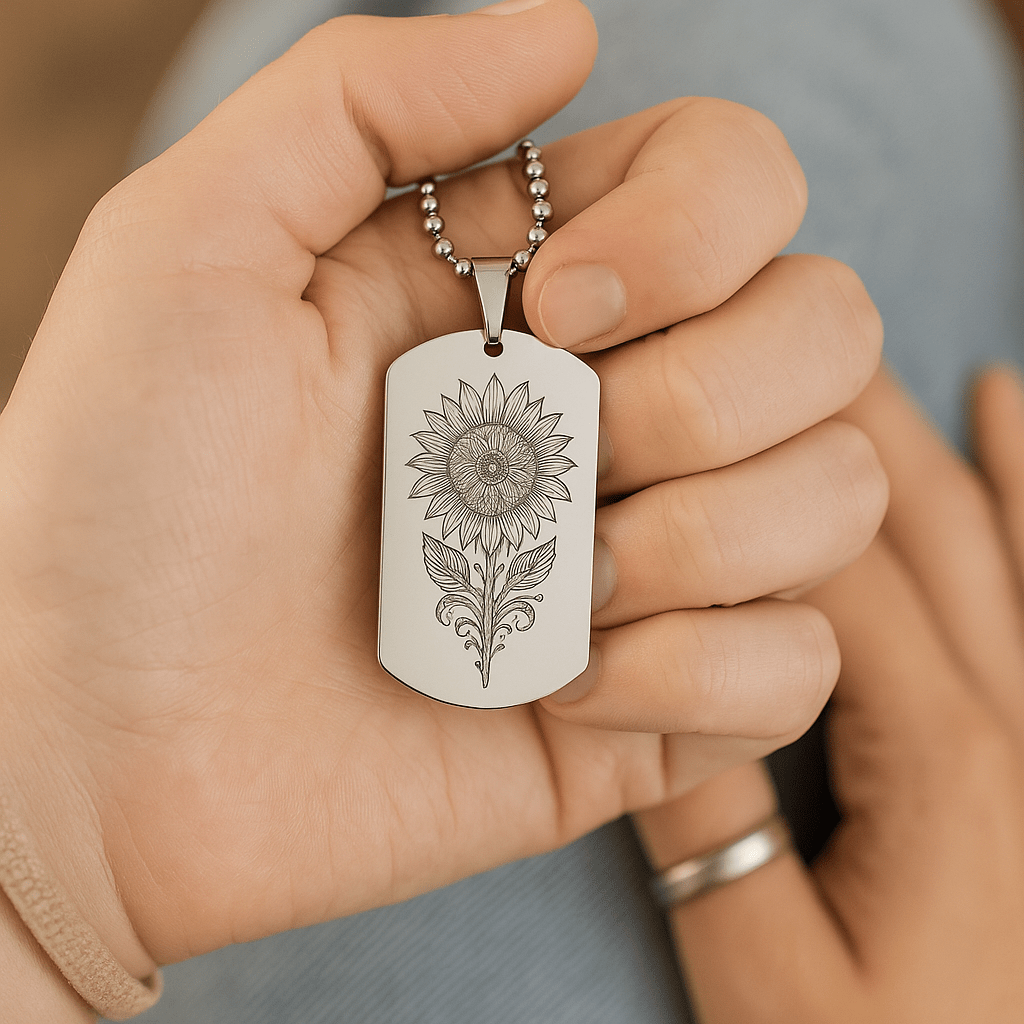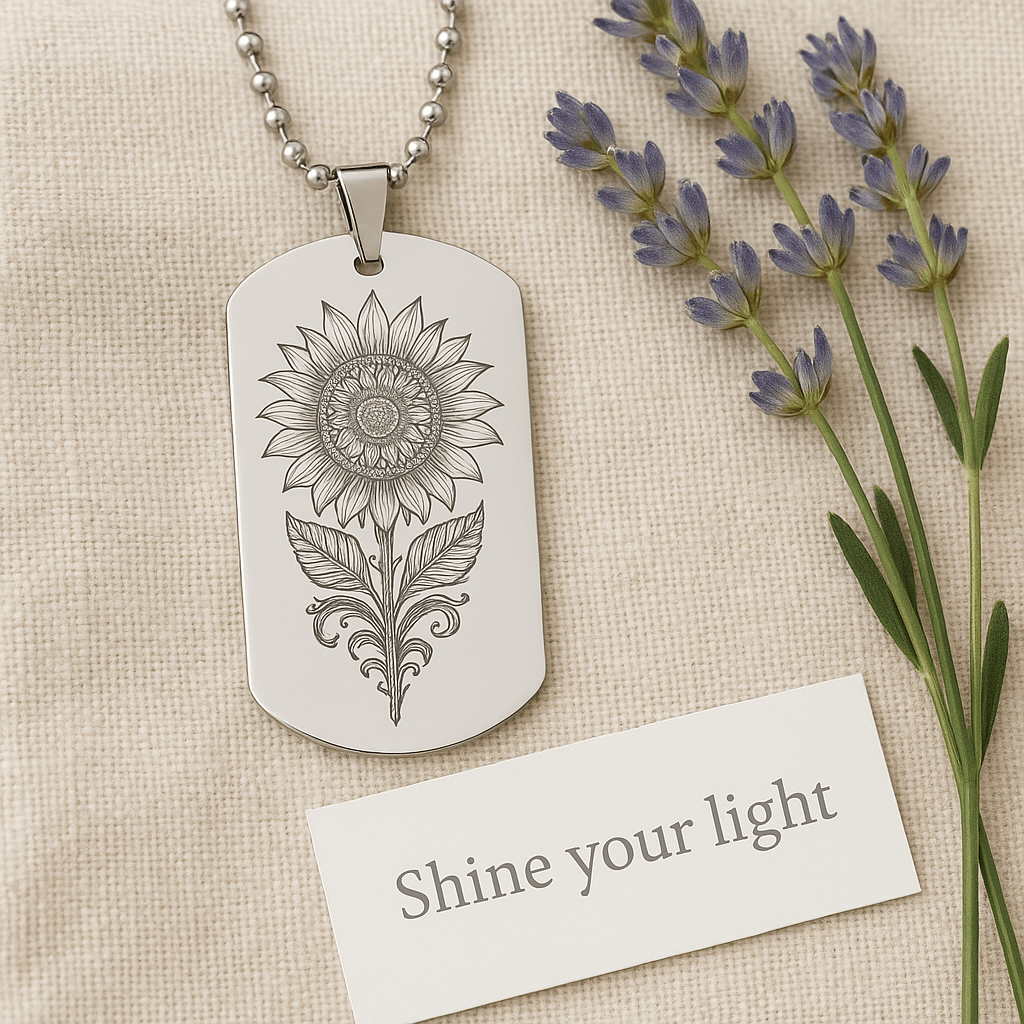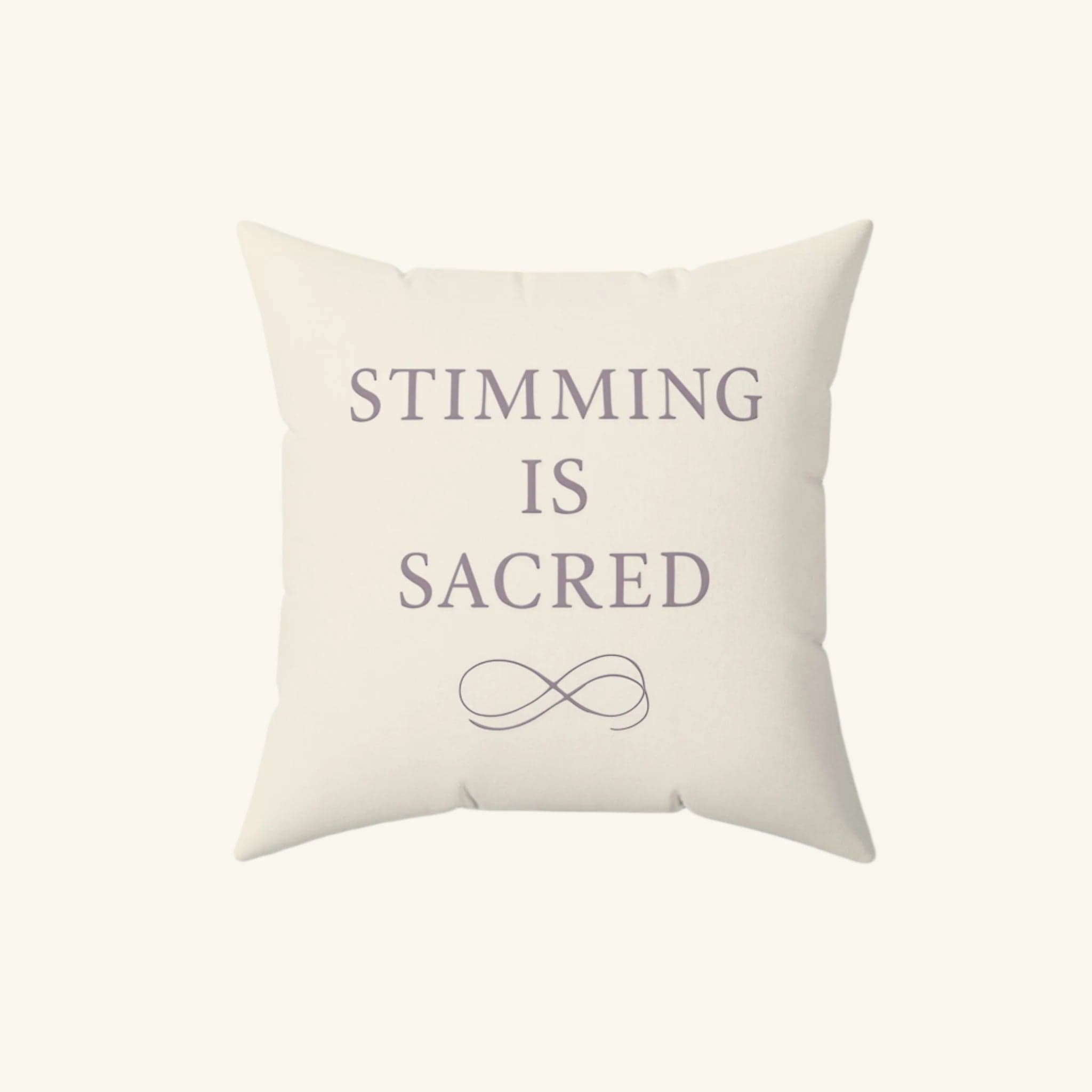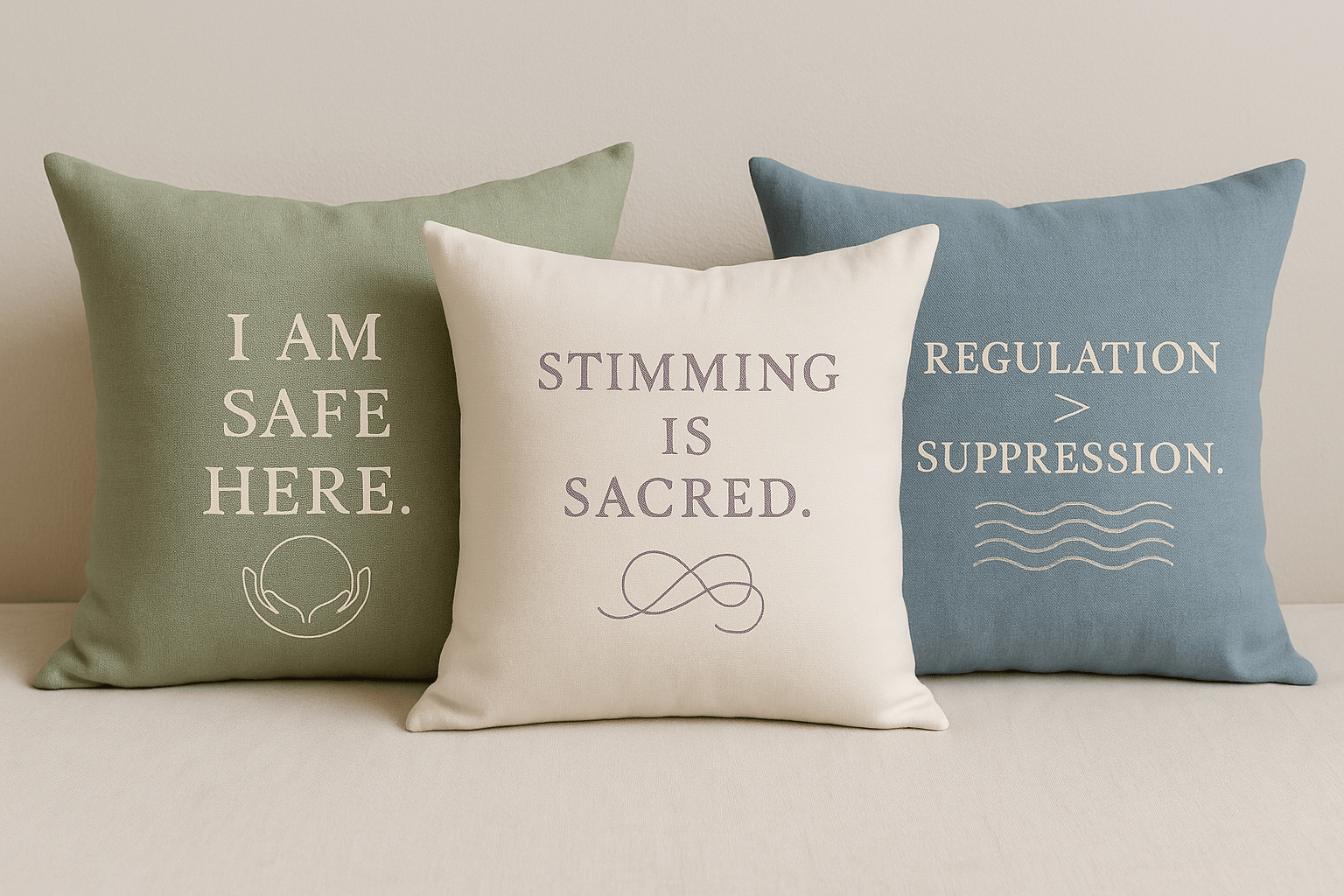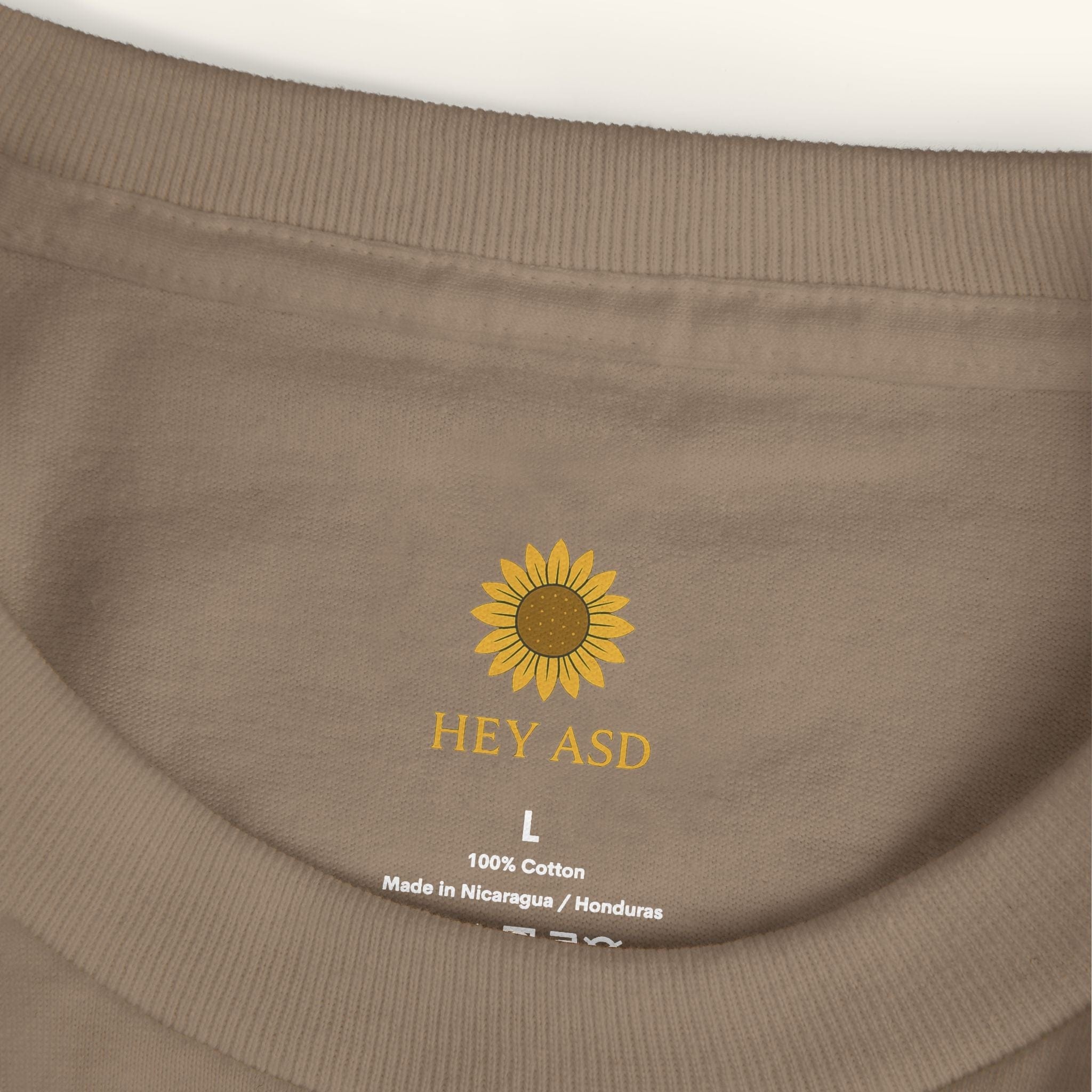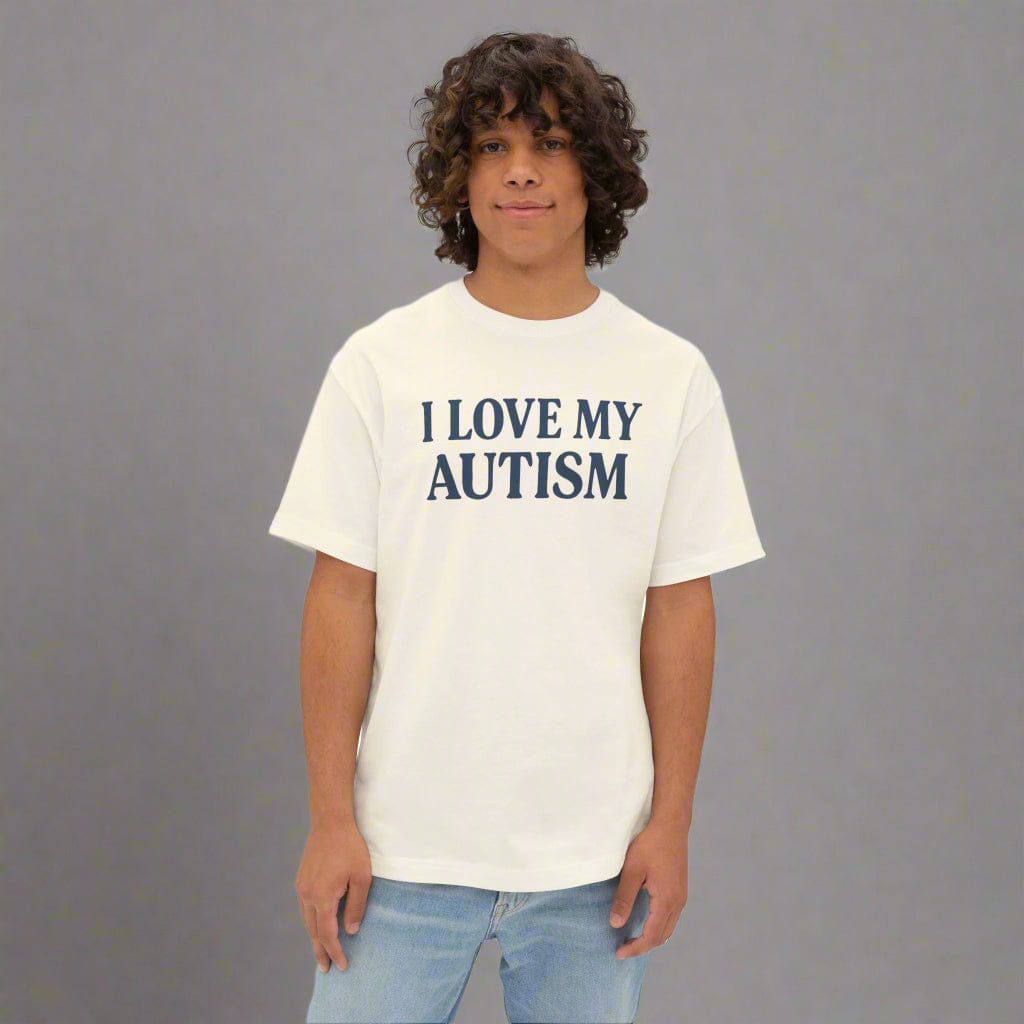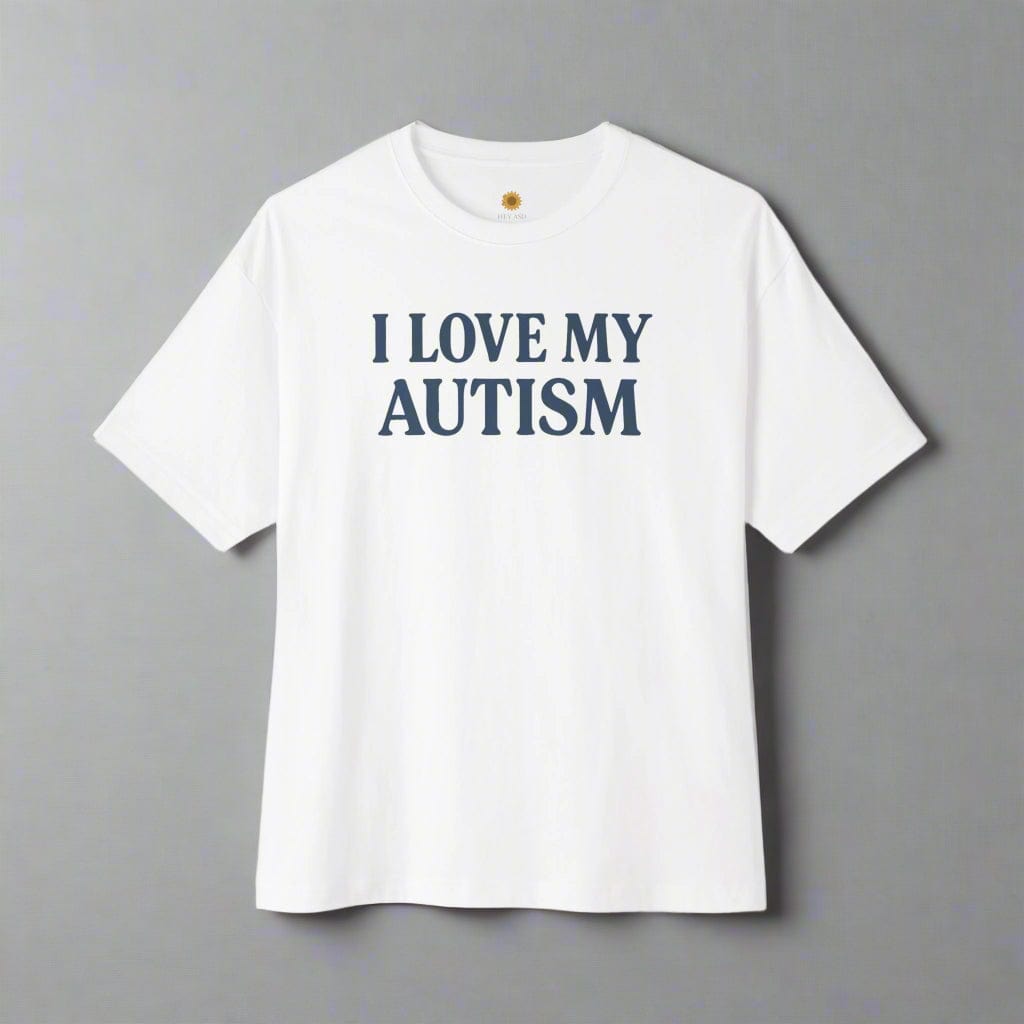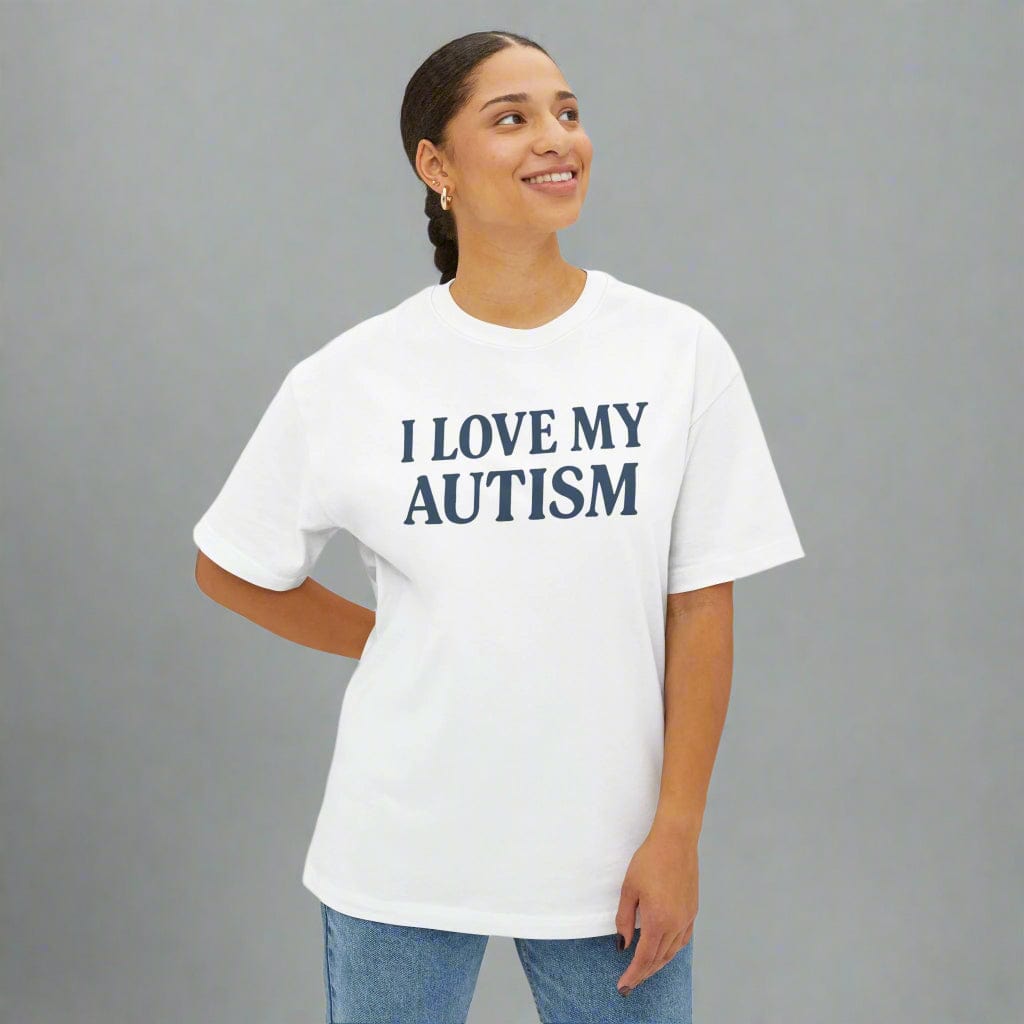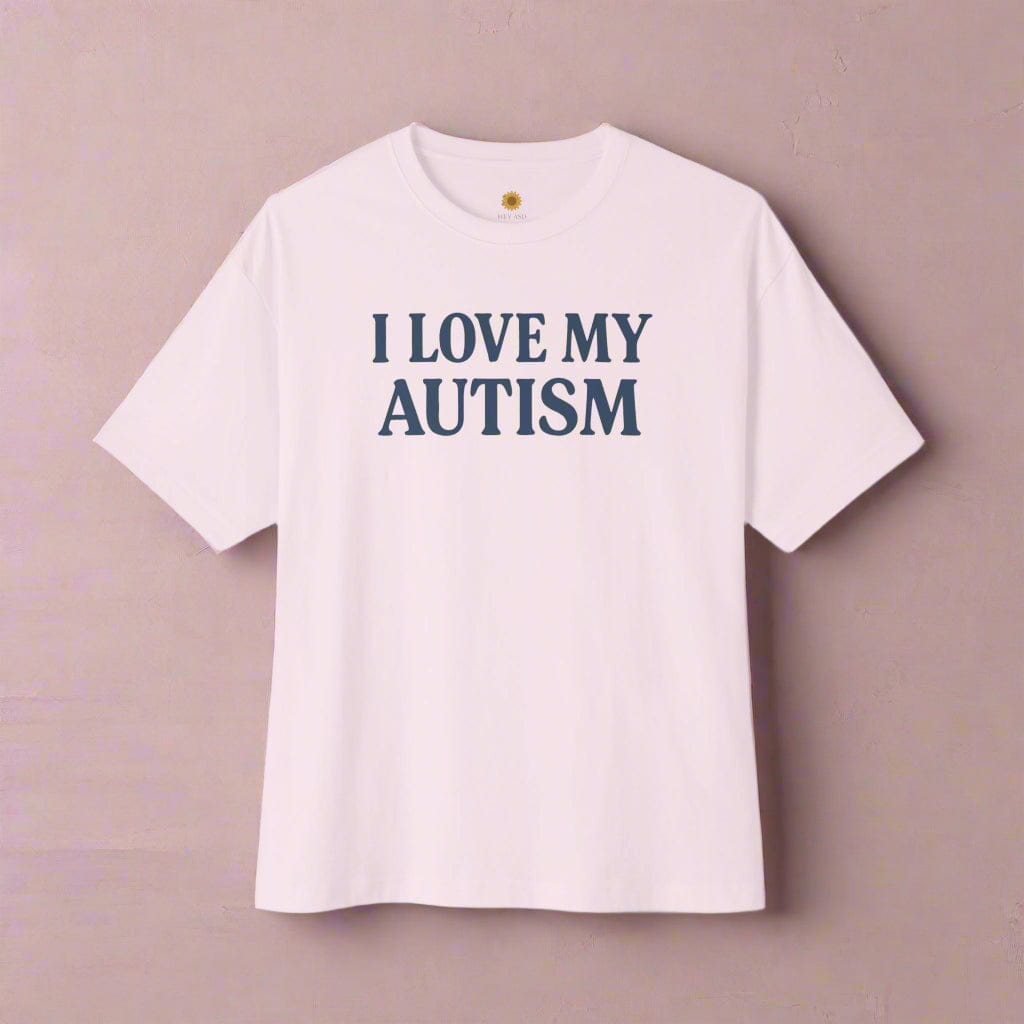Loving Someone with Autism and ADHD: Building a Relationship That Honors Both Brains

Written by the HeyASD Editorial Team
You're here because you want to love your partner better, and that's a beautiful starting point. When your partner is autistic and also has ADHD, their brain navigates the world differently. This can shape everything from social interactions to how they process focus and sensory input in romantic relationships.
This guide isn't about managing your partner; it's about building a connection that honors both of your brains. It’s about creating mutual understanding, celebrating differences, and finding a rhythm that works for your unique partnership.
Understanding Autism and ADHD in Relationships
When you’re dating someone with both autism and attention deficit hyperactivity disorder, it's helpful to understand how these two neurotypes work together. Autistic individuals and those with ADHD often have unique strengths and face different challenges in romantic relationships, especially regarding communication and social interaction.
Gaining insight into their world is the first step toward building a compassionate and supportive bond. This understanding helps you navigate their mental health needs and appreciate the unique qualities they bring to the relationship. Next, we will explore how these neurodivergent brains work and the common traits that shape connection.
How Neurodivergent Brains Work Together
Research shows that a significant percentage of autistic people also have ADHD. This combination, sometimes called AuDHD, creates a unique experience that is different from having just one or the other. It’s not simply a matter of adding two lists of traits together; the traits can interact and amplify one another.
For example, an autistic brain might be detail-oriented, while an ADHD brain can have attentional differences. When combined, it can become very difficult to ignore all the sensory details in an environment. This can lead to feeling overstimulated more easily than someone who is only autistic or only has ADHD.
Understanding this interaction is key. It helps explain why your partner might react in ways you don't expect. Instead of seeing separate traits, you begin to see a complete, interconnected way of experiencing the world, which is fundamental to navigating romantic relationships differently from others.
Common Traits That Shape Connection
Certain characteristics common in autistic adults with ADHD can directly influence dating and connection. These aren't flaws but simply differences in processing the world. Recognizing them can help you better interpret your partner's actions and needs.
Many of these traits relate to social interactions and emotional regulation. By learning about them, you can avoid misinterpreting behaviors and instead foster a more supportive environment.
Some common characteristics you might notice include:
-
Communication Differences: A preference for direct, literal language and challenges interpreting nonverbal social cues.
-
Sensory Sensitivities: A heightened or lowered sensitivity to noise, touch, light, or textures.
-
Rigid Thinking and Routine: A preference for predictability and difficulty with unexpected changes.
-
Intense Special Interests: A deep focus and passion for specific topics or hobbies.
-
Emotional Regulation Challenges: Difficulty managing and expressing heightened or decreased emotional responses.
The Value of Seeing Each Other’s Lived Experience
True connection comes from appreciating each other's lived experience. Your partner’s reality, shaped by their neurotype, is valid and real. When you make an effort to understand their perspective without judgment, you build a foundation of trust and safety. This involves listening to scholarly articles and secondary sources, but more importantly, listening to your partner.
This shared understanding is immensely validating for both of you. When your partner feels seen and accepted for who they are, they can be their authentic self. This might involve them feeling comfortable enough to unmask or share their special interests with you. This creates a safe space where both of you can grow.
Many autistic people with ADHD give advice about dating that centers on this principle: find a partner who seeks to understand your world, not just tolerate it. When both partners commit to this, the relationship becomes a space of mutual support and better mental health.
When Autism and ADHD Exist Side by Side
When a person has a dual diagnosis of autism and ADHD, their experience is more than just a simple overlap. Certain strengths can be amplified, while some challenges may become more complex. This can affect daily life, mental health issues, and how they engage in romantic partnerships.
Understanding this unique combination helps you and your partner navigate your relationship with more empathy and effectiveness. Below, we'll look at the specific strengths and differences, how they impact romance, and how to navigate sensory needs together.
Overlapping Strengths and Differences
The combination of autism and ADHD can create a unique profile of strengths and differences. While scholarly articles are beginning to explore this, the lived experience of autistic adults offers valuable insights. Some autistic traits can seem to balance or contrast with ADHD traits in interesting ways.
For example, the autistic need for routine might clash with the ADHD tendency toward novelty-seeking. On the other hand, the deep focus from autism can combine with the creative energy of ADHD to produce incredible results in areas of passion.
Recognizing these interactions is a powerful search tool for understanding your partner. It moves beyond stereotypes and allows you to appreciate the specific person you love.
|
Trait Aspect |
Autism Tendency |
ADHD Tendency |
Combined (AuDHD) Experience |
|---|---|---|---|
|
Focus |
Deep, narrow focus on special interests (hyperfocus). |
Difficulty sustaining attention on "boring" tasks; attention shifts easily. |
Can result in intense hyperfocus on interests but executive challenges with daily tasks. |
|
Social |
Difficulty understanding neurotypical social norms. |
Understands norms but has trouble abiding by them due to impulsivity or inattention. |
A dual challenge of not understanding social cues and struggling to follow them even when known. |
|
Routine |
Thrives on predictability and routine; change can be distressing. |
Can find routines boring and seek novelty; struggles with consistency. |
A constant internal push-and-pull between needing structure and craving spontaneity. |
Scheduling, Attention, & Overwhelm in Romance
For a partner with co-occurring autism and attention deficit hyperactivity disorder, daily life can be a balancing act. Challenges with time management and executive function can make scheduling difficult. This isn't about a lack of care; it's about how their brain processes tasks and priorities.
In social situations, managing multiple inputs can lead to sensory overload or distraction. Your partner might seem uninterested when they are actually working hard to process the environment and the conversation at the same time.
To manage misunderstandings and support your partner, consider these tips:
-
Plan Ahead: Discuss plans in advance to reduce anxiety around unexpected changes.
-
Use Visual Aids: Shared calendars or written lists can help with organization and time management.
-
Schedule Downtime: Build in quiet time after social events for them to decompress and avoid autistic burnout.
Navigating Sensory Needs Together
Sensory needs are a significant part of life for many autistic people. When ADHD is also present, these needs can be even more complex. Your partner may be hypersensitive (overly sensitive) or hyposensitive (under-sensitive) to touch, sound, light, smells, or tastes. These sensory sensitivities can change from day to day.
In romantic relationships, this can affect everything from choosing a restaurant to physical intimacy. A light touch might feel painful, or a loud environment could be completely overwhelming. The key is open communication. Talking about sensory needs without judgment allows you to find what works for both of you.
Accommodations can be simple, like dimming the lights, using a comfortable sensory blanket, or choosing quieter date spots. If you're struggling, seeking professional support from an occupational therapist trained in sensory integration can provide helpful strategies.
Recognizing and Interpreting Neurodivergent Signals
Learning to read your partner's signals is crucial, but it's important to know that their signals might not match neurotypical expectations. Body language, facial expressions, and reactions to social cues can be different. What might look like disinterest could actually be a sign of deep concentration or overwhelm.
Understanding these differences helps prevent misinterpretations. For example, your partner might be masking, or consciously hiding their natural behaviors to fit in. Recognizing these moments can help you build a more authentic connection. Let's look at how to differentiate these signals and understand their emotional styles.
Differentiating Distraction From Sensory Overload
Does your partner seem distracted during conversations? It's easy to mistake this for a lack of interest, but it could be something else entirely. For someone with attention deficit hyperactivity disorder, their mind might be managing multiple thoughts at once. For an autistic person, they might be experiencing sensory overload from the environment.
When these coexist, your partner might be navigating both internal and external distractions. Instead of assuming they don't care, consider that they might be overwhelmed. This shift in perspective can change how you approach these moments in your social interactions.
How can you tell the difference and better understand your partner's needs?
-
Ask Gently: "You seem a little distant. Is everything okay?" or "Is it too loud in here?"
-
Observe the Context: Is the environment noisy, crowded, or visually busy?
-
Look for Stress Cues: Are they stimming more, avoiding eye contact, or seem tense?
-
Create a Signal: Agree on a nonverbal cue they can use when they feel overwhelmed.
Understanding Emotional Regulation Styles
Emotional regulation can look very different for autistic individuals, especially those who also have ADHD. Scholarly literature suggests that emotional dysregulation can be more frequent, meaning they might experience emotions very intensely or have difficulty controlling their reactions to stress.
This can manifest as meltdowns, which are uncontrollable responses to overwhelming situations. It’s not a tantrum or a choice; it's a reaction to distress. It can be confusing if you don't understand what's causing the overwhelm. Your partner might not even know how to express what's wrong in the moment.
A helpful search result might show that learning your partner’s triggers is key. Do they get overwhelmed when routines change or in crowded places? By identifying these triggers, you can help prevent stressful situations and offer support more effectively. It’s about understanding their internal experience, not judging their external reaction.
Honoring Masking and Unmasking Moments
Masking, or camouflaging, is when an autistic person consciously or unconsciously hides their autistic traits to appear more neurotypical. This can involve forcing eye contact, suppressing stimming, or rehearsing social scripts. It takes an immense amount of energy and can lead to exhaustion and autistic burnout.
When your partner feels safe enough with you to stop masking, it is a profound sign of trust. This "unmasking" might look like them stimming freely, being more direct in their communication, or simply not performing social niceties. Their body language might change as they relax into their authentic self.
Honoring these moments means accepting them without judgment. Create a space where they don't have to perform. Let them know it's okay to be themselves. If you're unsure how to support them, professional help from a neurodiversity-affirming therapist can provide guidance for you both.
Building Trust Through Communication
Effective communication is the foundation of any strong relationship, and this is especially true in a neurodiverse partnership. The best way to build trust is to find a communication style that works for both of you. For many autistic people, this means valuing direct language over subtle hints.
Being clear and predictable in your communication can reduce anxiety and prevent misunderstandings. Let's explore why direct language is so important, how predictability creates safety, and how you can discover each other’s preferred ways of connecting.
Direct Language vs. Subtle Hints
In many relationships, people rely on subtle hints, sarcasm, or nonverbal social cues to communicate their needs. However, for an autistic partner, this type of communication can be confusing and stressful. They often process language literally and may not pick up on unspoken meanings.
Using direct language is a powerful way to show you care. It removes guesswork and ensures your message is understood as intended. This isn't about being blunt or unkind; it's about being clear. Saying exactly what you mean fosters trust and reduces the mental load for your partner.
What does this look like in practice?
-
Instead of sighing loudly when the trash is full, say, "Can you please take out the trash?"
-
If you need emotional support, say, "I had a hard day and could really use a hug."
-
Avoid using sarcasm or figurative language unless you are sure your partner will understand it.
-
Ask direct questions to understand their needs: "What can I do to help you right now?"
Predictable Plans and Small Acts of Reassurance
While grand, surprising gestures are often romanticized, they can be a source of anxiety for an autistic person who thrives on routine. Predictable plans create a sense of safety and allow your partner to mentally prepare for an event, which helps manage their energy and reduces stress in social situations.
This doesn't mean your relationship has to be rigid or boring. It just means that discussing changes in advance is an act of love. A regular Google search will show that predictability is a key factor in improving mental health for many autistic adults.
Similarly, small, consistent acts of reassurance can be more meaningful than big, infrequent displays of affection. A simple text during the day, a consistent good-morning hug, or verbally confirming your love can reinforce your connection and create a stable emotional foundation in the relationship.
Discovering Each Other’s Preferred Communication Style
Every person has a unique communication style, and discovering what works for both you and your partner is a journey. It requires curiosity and a willingness to adapt. Don't assume your partner communicates or receives communication the same way you do. Ask them directly what they prefer.
Some couples find that written communication, like texting or email, is very helpful. It gives the autistic partner more time to process information and formulate a response without the pressure of an immediate verbal reply. A Google Scholar search using a specific search phrase like "autism and written communication" can yield full text articles on this topic.
The goal is to find a method that minimizes stress and maximizes understanding. This might be a mix of verbal check-ins, written notes, and even using a shared app or autism AI tool to organize thoughts. Experiment together to find a rhythm that feels supportive for both of you.
Supporting Your Partner While Respecting Boundaries
Supporting your partner is about being a safe harbor, not a fixer. Your role is to be an ally, which means learning how to offer help in a way that feels empowering, not controlling. This requires a deep respect for their boundaries, both sensory and emotional.
Understanding your partner's needs and limits is an ongoing process of communication and observation. The following sections will provide guidance on how to offer help without overstepping, respect their limits, and the importance of asking before you try to solve a problem for them.
How to Offer Help Without Overstepping
It's natural to want to help when you see your partner struggling. However, jumping in with solutions can sometimes feel dismissive or controlling. The most effective way to support your partner's needs is to empower them. This starts with asking how you can help instead of assuming you know what's best.
This approach respects their autonomy and shows that you trust their ability to identify their own needs. Searching for bibliographic data on neurodiverse relationships will confirm that fostering independence is crucial.
Here are some ways to offer help respectfully:
-
Ask First: "I notice you seem stressed. Is there anything I can do to help?"
-
Offer Specific, Optional Support: "Would it be helpful if I made dinner tonight so you can have some quiet time?"
-
Listen to Their Answer: If they say no, respect that. They know their needs best.
-
Frame it Collaboratively: "How can we solve this problem together?"
Respecting Sensory and Emotional Limits
Your partner has a finite amount of social and sensory energy each day. Respecting their limits is fundamental to a healthy relationship. This means understanding that their need for alone time or to disengage from an activity is not a rejection of you, but a necessary form of self-care.
Their emotional limits are just as important. They may need more time to process feelings or might become overwhelmed during intense conversations. Pushing them to talk before they are ready can be counterproductive. Give them the space they need to regulate their emotions.
This also applies to their special interests. These are often a source of joy and a way to recharge. Respecting the time they dedicate to these interests is a way of respecting them. It's about finding a balance that honors their needs for quiet and recharging alongside your need for connection.
Asking Before Suggesting Solutions
When your partner expresses a problem, your first instinct might be to jump into problem-solving mode. However, they may not be looking for a solution. Often, they just want to be heard and have their feelings validated. Offering unsolicited advice can feel like you're minimizing their struggle.
Before you suggest a fix, always ask. A simple "Are you looking for advice, or do you just need me to listen?" can make a world of difference. This question respects their boundaries and clarifies what kind of support they need in that moment.
Using a search engine or Google Scholar search tips to look up "active listening" can provide great strategies. The goal is to be a supportive partner, and that often means being a compassionate listener first and a problem-solver second. This simple habit builds trust and shows that you value their emotional experience.
Celebrating Neurodivergent Relationship Strengths
While it's important to navigate challenges, it's equally important to celebrate the incredible strengths that neurodivergent relationships offer. When an autistic partner with ADHD chooses to love you, that love is often marked by a profound depth, intention, and honesty that is truly special.
These relationships can be filled with creativity, intense loyalty, and a unique way of seeing the world that enriches both of your lives. Let's explore some of these beautiful strengths and how you can create rituals that honor both of your brains.
Loyalty, Creativity, and Intentional Love
One of the most powerful strengths in a relationship with an autistic partner is their capacity for deep and unwavering loyalty. Because social connection can take more energy, the relationships they choose to invest in are often deeply valued. Their love isn't casual; it's intentional.
This intentionality also shows up in their honesty. You will likely find that your partner is refreshingly direct and genuine. There are often no mind games, just a sincere desire to connect. This can create a foundation of incredible trust.
Furthermore, the combination of autistic focus and ADHD creativity can lead to a partner who sees the world in brilliant and unique ways. Embracing their perspective can open your own world up to new ideas and passions. Their intense love is a gift, even if it's expressed in unconventional ways.
Mutual Support and Growth Opportunities
A neurodiverse relationship is a powerful opportunity for mutual support and growth. As you learn to navigate each other's needs, you both develop greater empathy, patience, and communication skills. Journal articles and technical reports on relationships often highlight that overcoming challenges together strengthens a couple's bond.
You learn to see the world from a new perspective, and your partner learns to navigate a world that wasn't built for them with an ally by their side. This creates a unique partnership where you are both teachers and students.
This dynamic fosters incredible personal growth. You might become more direct and honest in your own communication, while your partner may feel more confident exploring new social situations with your support. Together, you build a unique set of tools that makes your relationship resilient and deeply connected.
Creating Rituals That Honor Both Brains
Rituals are predictable, repeated actions that create a sense of stability and connection. In a neurodiverse relationship, creating rituals that honor both of your needs is a beautiful way to strengthen your bond. These don't have to be grand; small, consistent rituals can be the most powerful.
The process of ritual creation should be collaborative. Talk about what makes each of you feel safe, connected, and loved. Think about different ways you can build moments of predictability into your daily life together.
Here are a few ideas to get you started:
-
Parallel Play Time : Set aside time each evening to be in the same room but engaged in your own separate, calming activities—like one person reading while the other explores a special interest.
-
Sensory-Friendly Dates: Plan a recurring "date night in" with comforting food, a favorite movie, and a cozy sensory blanket, creating a low-pressure way to connect.
-
Daily Check-in: Have a scheduled, low-pressure 10-minute chat each day to share one good thing and one challenging thing, using direct and simple language.
Tips for Managing Misunderstandings
Misunderstandings are inevitable in any relationship, but they can feel more frequent when you and your partner have different neurotypes. The key is to approach these moments not as a conflict, but as a translation issue. Your partner's behavior is a form of communication, even if you don't immediately understand it.
Instead of reacting with frustration, try to get curious. By learning to translate needs, adopting gentle problem-solving approaches, and having strategies for overwhelm, you can navigate these moments with compassion and strengthen your bond.
Translating Needs and Behaviors
Often, a behavior that seems confusing or frustrating is simply an expression of an unmet need. Your partner isn't trying to be difficult; they are trying to communicate something in the only way they know how in that moment. Learning to translate their behaviors can be one of the most loving things you do.
For example, if your partner suddenly leaves a social gathering, it might not be because they are upset with you. They might be communicating, "I've hit my sensory limit and I need to leave now to avoid a meltdown." Recognizing this helps you respond with support instead of hurt.
Here’s how to practice translation:
-
"They don't care" vs. "They are overstimulated." Reframe a lack of response as a sign of overwhelm.
-
"They are ignoring me" vs. "They are hyperfocused." Understand that their intense focus is a trait, not a rejection.
-
Pause and Get Curious: Before reacting, ask yourself, "What need could this behavior be communicating?"
Gentle Problem-Solving Approaches
When conflicts arise, it's important to approach them gently. A confrontational or emotionally charged approach can be overwhelming for an autistic partner and may cause them to shut down. A gentle approach creates a safe space to resolve issues without triggering a stress response.
This means focusing on the problem, not the person. Use "I" statements to express your feelings without placing blame. For example, instead of saying, "You never listen to me," try, "I feel unheard when I'm talking and there are other distractions." This invites collaboration rather than defensiveness.
If the conversation becomes too intense, it's okay to take a break. Agree to pause and come back to the discussion when you are both calm. This respects everyone's mental health and prevents a small issue from escalating. If needed, professional support can help you develop these skills.
Strategies for Managing Overwhelm and Conflict
Having a plan for moments of overwhelm and conflict can make them much less stressful. These strategies should be discussed and agreed upon when you are both calm, not in the middle of a disagreement. These are coping strategies that you build together as a team.
The goal is to de-escalate the situation and give your partner the space they need to regulate. It's also about ensuring you can express your needs without causing your partner to shut down from stress.
Here are some effective strategies:
-
The Pause Button: Agree on a word or signal (like a "T" sign with your hands) that either of you can use to pause a tense conversation immediately.
-
Designated Calm-Down Spaces: Have a specific area in your home where each person can go to be alone and regulate without interruption.
-
Write It Down: If talking is too hard, switch to writing. Texting or using a shared document can lower the emotional intensity.
-
Set a Time to Reconnect: When you take a break, agree on a time to check back in, even if it's just to say you're not ready to talk yet. This provides reassurance.
Advice From Neurodivergent Partners
Some of the most valuable insights come from those with lived experience. Listening to the advice of neurodivergent partners and what they say helps most can be incredibly illuminating. Their wisdom, often supported by scholarly literature, emphasizes authenticity, clear communication, and mutual respect.
This section shares wisdom from autistic people with ADHD, highlights what partners find most helpful, and discusses the importance of self-care and empowerment for both people in the relationship. Their experiences offer a practical roadmap for building a thriving partnership.
Wisdom Shared By Autistic People With ADHD
What do autistic people with an ADHD diagnosis say is most important in a relationship? Overwhelmingly, the advice centers on finding a partner who is willing to learn and adapt with them. They want someone who sees their traits as differences, not deficits.
A common search result for advice from autistic adults is the need for patience. They may process information more slowly or need more time to transition between tasks. A patient partner who doesn't rush them is seen as a safe and supportive presence.
They also emphasize the importance of accepting their need for routine and alone time. This isn't a rejection but a vital part of their self-care. Finally, they ask partners to trust them when they state a need. If they say a sound is too loud or they need to leave, believe them.
What Partners Say Helps Most
When we look at valuable insights from partners of people who are autistic, a few themes stand out. One of the most common pieces of advice is to educate yourself. Reading books, secondary sources, and conference papers about autism and ADHD from neurodiversity-affirming perspectives can be transformative.
Partners also stress the importance of not taking things personally. When their autistic partner needs space or communicates very directly, it's not a reflection of their love for them. Understanding the "why" behind the behavior helps prevent hurt feelings.
Finally, finding a community of other neurodiverse couples or partners is incredibly helpful. Sharing similar experiences reduces feelings of isolation and provides practical strategies. It's a reminder that you are not alone on this journey and that other people are successfully navigating these same dynamics.
Self-Care and Empowerment Within Relationships
Supporting your partner is vital, but you cannot pour from an empty cup. Prioritizing your own self-care and mental health is not selfish; it's essential for the long-term health of the relationship. This means carving out time for your own hobbies, friendships, and interests.
Empowerment in the relationship is a two-way street. Just as you support your partner's autonomy, you must also advocate for your own needs. This might mean joining a support group, talking to a therapist, or simply scheduling time for yourself. A Google Scholar search on caregiver burnout can highlight the importance of this.
A healthy neurodiverse relationship is one where both partners feel supported and have the resources they need. This includes finding your own community and outlets outside the relationship, which can make your time together more fulfilling. Expressing your identity and finding joy, perhaps through items from an autism store or wearing autism pride apparel like autism t-shirts or autism hoodies, can be a part of this empowerment.
Key Takeaways: Dating Someone with Autism and ADHD
- Autism and ADHD together (AuDHD) can shape unique strengths and challenges in relationships.
- Direct, literal communication builds trust and reduces misunderstanding.
- Predictability and small daily reassurances foster safety and comfort.
- Respecting sensory needs and emotional boundaries shows genuine care.
- Neurodivergent love thrives when both partners are curious, patient, and kind.
Final thoughts
Building a relationship that honors both neurodivergent brains requires patience, understanding, and unconditional love. Embracing the unique traits brought by autism and ADHD can lead to a deeper connection, where both partners support each other in navigating life’s complexities.
Remember — it’s not about fixing or managing differences, but celebrating them. When you communicate openly and honor each other’s boundaries, love transforms into a safe, affirming space where authenticity can thrive.
Every step you take toward understanding strengthens your bond. The goal isn’t perfection — it’s connection, built gently, one honest conversation at a time.
Celebrate Connection with Meaningful Jewelry
Honor your bond with timeless pieces designed by and for the autism community. Each necklace and bracelet is a quiet reminder of understanding, comfort, and love that goes beyond words.
Explore Autism Jewelry Collection💚 Every piece tells a story of connection and care.
FAQS: Loving Someone with AUDHD
What signs show that autism or ADHD is impacting our relationship?
Signs can include frequent misunderstandings over communication style, where directness is mistaken for rudeness. You might also notice friction around social plans due to differing energy levels or sensory needs. A partner needing significant alone time to recover from social cues and interaction is also a common indicator of an autism spectrum or ADHD diagnosis impacting the relationship.
What are effective communication strategies for couples navigating autism and ADHD?
The most effective strategies are being direct, clear, and literal. Avoid sarcasm and subtle hints. Use written communication like texts or notes to allow for processing time. Scheduling regular, low-pressure check-ins can also prevent issues from building up. Asking clarifying questions is key to ensuring you both understand each other.
How can I support my partner’s sensory and emotional needs daily?
To support your partner’s sensory and emotional needs daily, create a sensory-friendly environment, establish clear communication, and practice active listening. Encourage regular breaks to process emotions and invite them to express their feelings openly. Small gestures can significantly enhance their comfort and security in the relationship.
What are some effective communication strategies for couples where one partner has autism or ADHD?
Effective communication strategies for couples include using clear and literal language, establishing routines for discussions, actively listening without interruptions, and utilizing visual aids or written notes. Regularly checking in on each other’s feelings fosters understanding and strengthens the relationship.
How can I better understand my partner's unique needs related to autism and ADHD?
To better understand your partner's unique needs, engage in open conversations about their experiences and challenges. Active listening and empathy are key. Additionally, consider learning about autism and ADHD to foster a deeper appreciation for their perspectives and create a supportive environment.
What are some common challenges faced in relationships involving autism and ADHD, and how can we overcome them?
Common challenges in relationships involving autism and ADHD include communication barriers, differing emotional responses, and sensory sensitivities. To overcome these issues, practice open dialogue, establish routines, and seek professional help if needed to enhance understanding and support between partners.
How can I support my partner with autism or ADHD while also prioritizing my own mental health?
Prioritize your mental health by setting your own boundaries and scheduling time for your own interests and friendships. Find a support system outside of your partner, such as a therapist or a group for partners of neurodivergent people. Remember that your self-care is essential for the long-term health of the relationship.
On This Page
Frequently asked questions
How can I tell if my partner’s withdrawal is sensory overload or emotional distance?
What’s the best way to comfort a partner who’s overstimulated?
How can I help my partner stay organized without taking over?
Is it normal for my partner to hyperfocus on interests instead of me?
How do I talk about misunderstandings without triggering shame or shutdown?
What should I do if my partner masks around me but later feels exhausted?
How can I support my partner’s executive function challenges (like time management)?
Can neurodiverse couples benefit from therapy?
How can I stay patient when progress feels slow?

About the HeyASD Editorial Team
Autistic‑owned • Values‑led • Sensory‑friendly design
We are autistic creators, writers, and advocates dedicated to producing resources that are practical, sensory-aware, and grounded in lived experience. Our mission is to make information and products that support the autistic community accessible to everyone, without jargon or condescension. Learn more about our team.
This article is written from lived autistic experience and an evidence-aware perspective. It is for general informational purposes only and should not be taken as medical, legal or therapeutic advice.
Always consult a qualified clinician or occupational therapist for individual needs and circumstances.

About Our Autism Blog
HeyASD isn’t just a store, it’s a calm, supportive space created by and for autistic adults. Our blog shares sensory-friendly tips, identity-affirming stories, and heartfelt resources for navigating life as an autistic person. Whether you're late-diagnosed, exploring your needs, or supporting someone you love, you're welcome here.
Thank you for reading. We hope these resources bring comfort and clarity.













